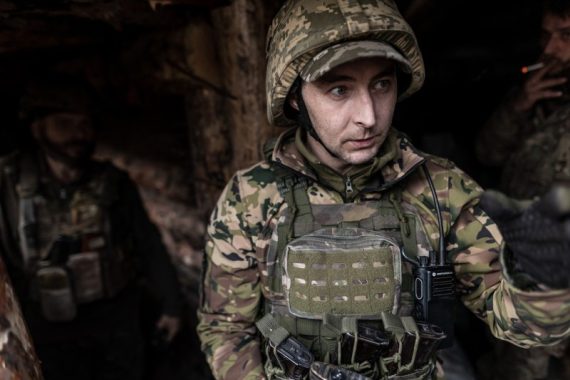I
n the shadow of the ongoing and brutal conflict that has gripped Eastern Europe, a Ukrainian civic group has released a grim tally based on open-source data: nearly 25,000 Ukrainian soldiers have perished since the onset of Russia’s incursion in February 2022, with total casualties potentially surpassing 30,000.
The casualty figures, which Kyiv considers a state secret, were disclosed amid concerns that their publication could jeopardize the country’s war efforts. These numbers starkly contrast with an August report by the New York Times, which cited anonymous U.S. officials and suggested a much higher Ukrainian death toll, nearing 70,000.
Historian Yaroslav Tynchenko and volunteer Herman Shapovalenko, through their work on the Book of Memory project, have documented 24,500 combat and non-combat deaths. This initiative, which has been tracking Ukraine’s war dead since Russia’s initial invasion in 2014, suggests that the true casualty count is likely more severe, as many of the 15,000 troops marked as missing are presumed to have died.
Reuters, while reporting on the matter, indicated it could not independently verify these figures. Nevertheless, the numbers echo a somber reality of a nation in the throes of war, with casualty estimates from various sources painting a harrowing picture of the human cost.
24,500 names are not the final number of dead
“Obviously, the 24,500 names are not the final number of dead (deceased), but by our assessment, it is no less than 70%,” the authors of the Tyzhden article stated, implying that the death toll in combat and non-combat situations is above 30,000.
Further applying a 1:3 ratio, Tynchenko and Shapovalenko also estimated that up to 100,000 troops have sustained injuries in the conflict—a staggering figure that speaks volumes about the scale and intensity of the fighting.
In response to inquiries, a spokesperson for Ukraine’s defense ministry refrained from commenting on the casualty figures. Similarly, Tynchenko, declined to offer additional remarks on the published article.
The report emerges as Ukraine braces for a protracted engagement with Russian forces. The nation’s top general, in a piece for the Economist, alluded to the conflict’s transition into a static and attritional phase. A Ukrainian counteroffensive, launched in June, has yielded only marginal territorial gains in the south and east.
Counterbalancing Western media estimates
The authors of the Tyzhden article emphasized the importance of counterbalancing Western media estimates, which they suggest are susceptible to manipulation, with data that can be verified. “Should we talk about this topic in Ukraine during the war? We believe so, but only in terms of concrete data and open and trustworthy sources,” they wrote.
Meanwhile, Russia maintains silence over its military casualties, offering no official count to the international community.
The report’s release coincides with a period of heightened tension and strategic deadlock, as Ukraine fortifies itself for a drawn-out struggle. The conflict, which has seen a flurry of Western support for Ukraine, including sanctions and military aid, has also stirred debate over the nature of warfare in the modern era.
Recommended
Devastating impact on military personnel and civilians alike
The war has brought to the forefront the devastating impact on military personnel and civilians alike. With infrastructure damaged and cities under siege, the societal toll is mounting. Displacement, trauma, and the loss of life have become everyday realities for millions of Ukrainians caught in the crossfire.
Internationally, the conflict has triggered a reevaluation of security policies, with NATO countries reaffirming commitments to defense and deterrence. The war’s ripple effects are felt across global economies, energy markets, and diplomatic relations, reaffirming the interconnectedness of modern geopolitical dynamics.
The situation in Ukraine remains dynamic, with military analysts closely monitoring the shifts in strategy and tactics from both Ukrainian and Russian forces. As the world watches, the human cost reflected in these casualty figures serves as a somber reminder of the war’s harsh realities and the urgent need for a peaceful resolution.
In Ukraine, the war’s outcome remains uncertain, but the resolve of its people, emboldened by support from the international community, has not wavered. As battles rage on, the spirit of resilience continues to define a nation under siege, determined to secure its sovereignty and future.
Sources: Reuters and US News





